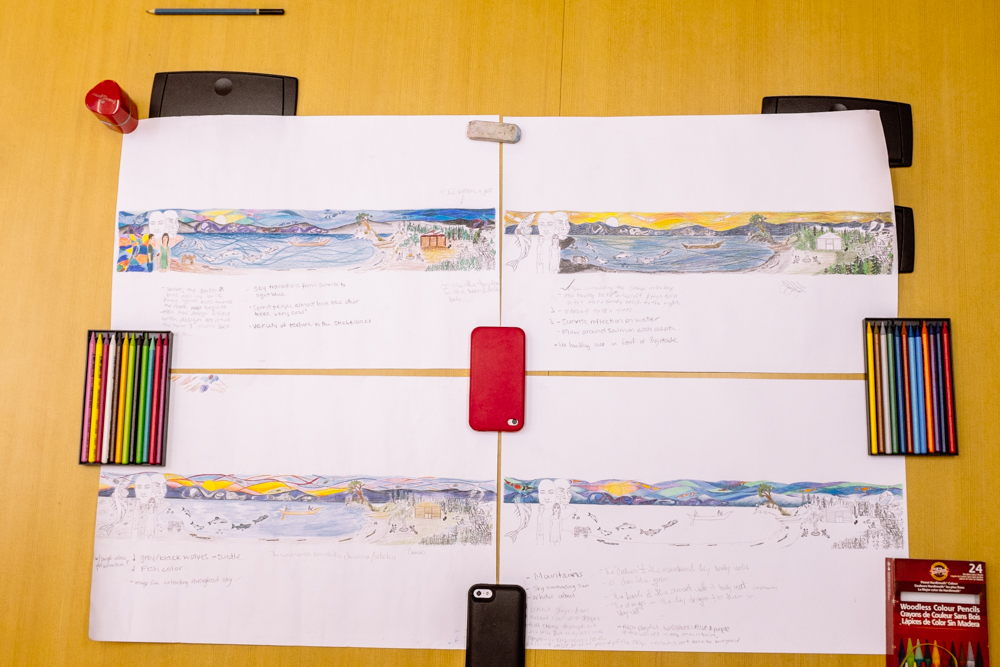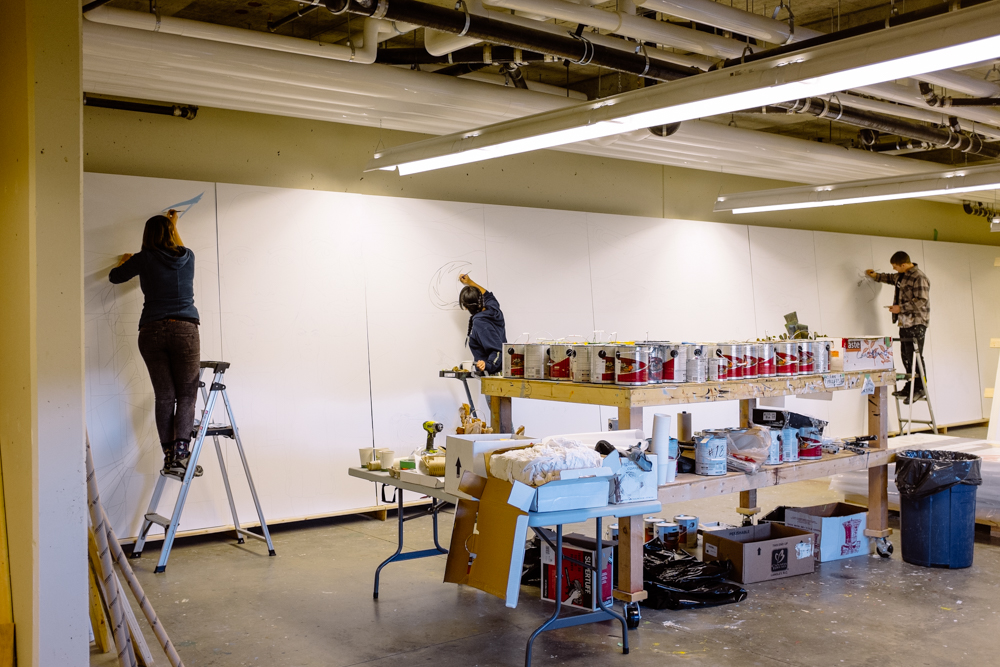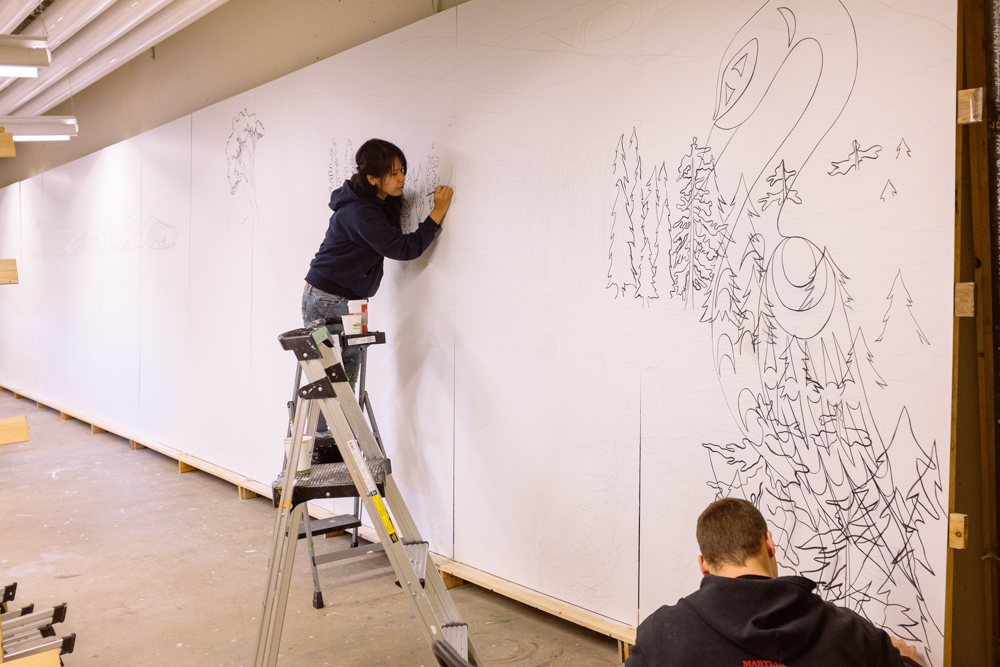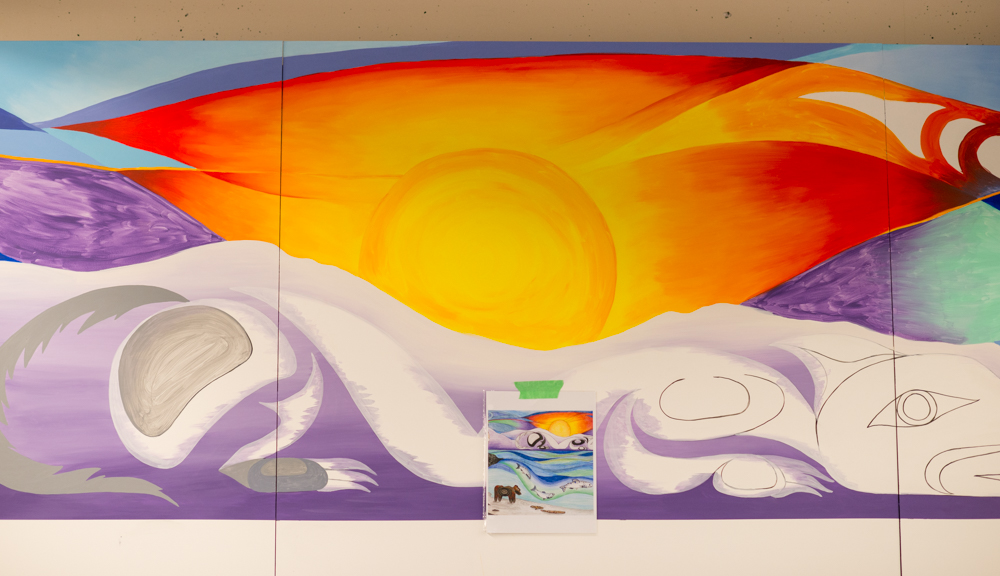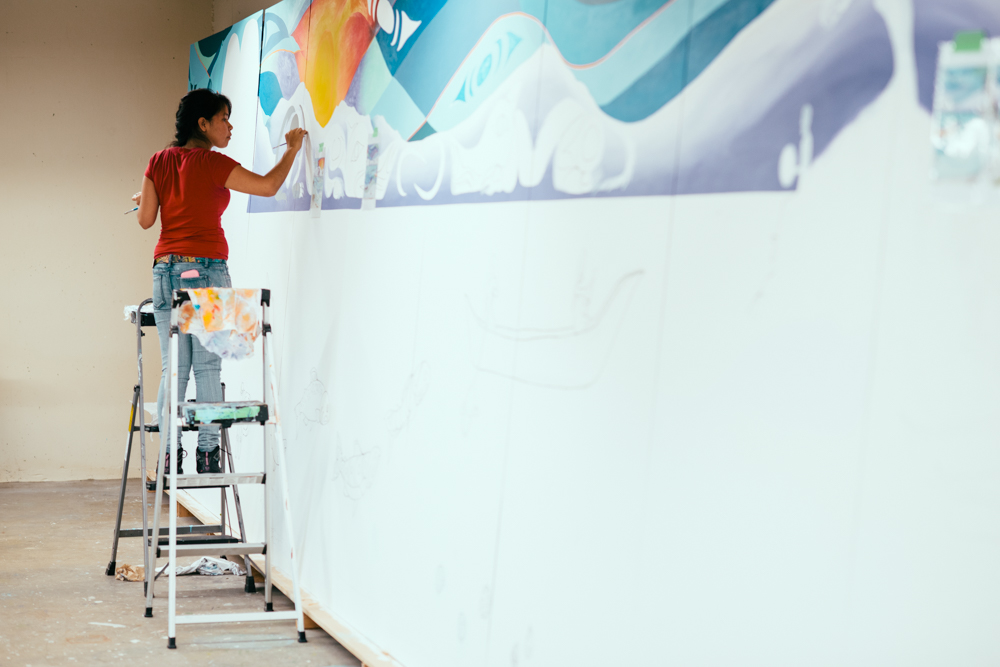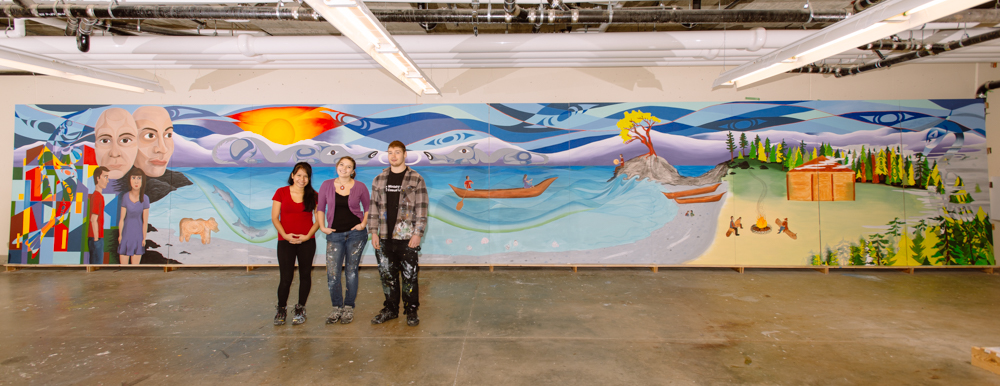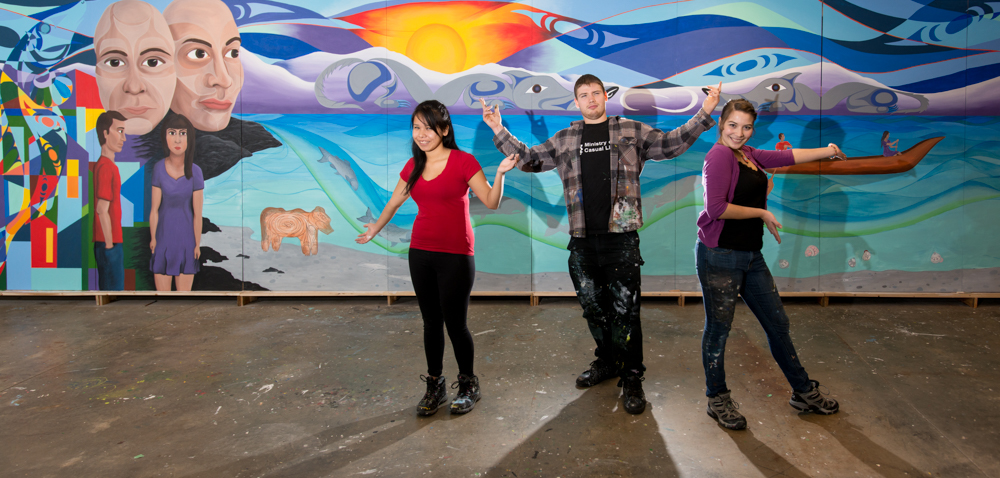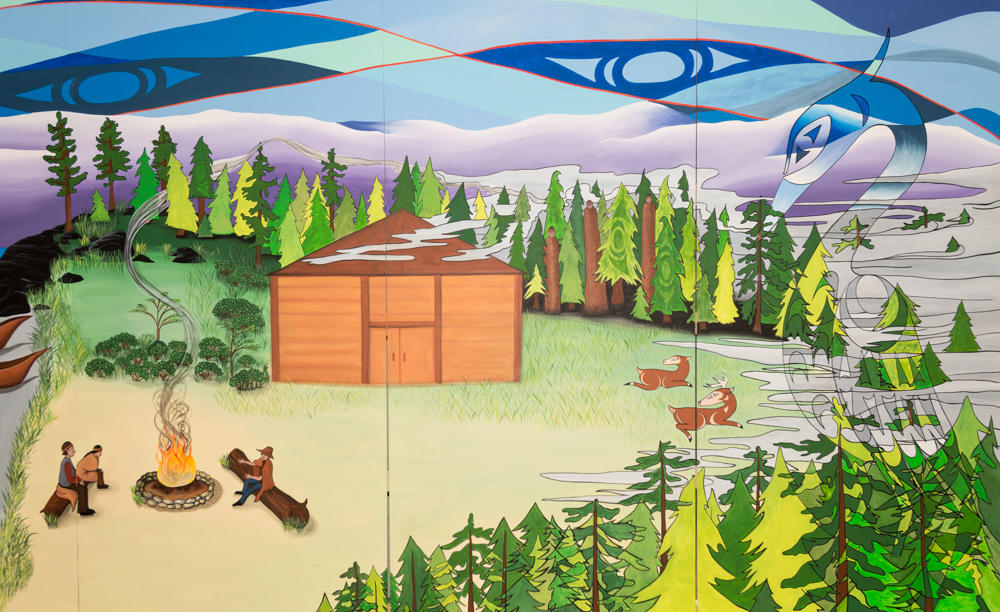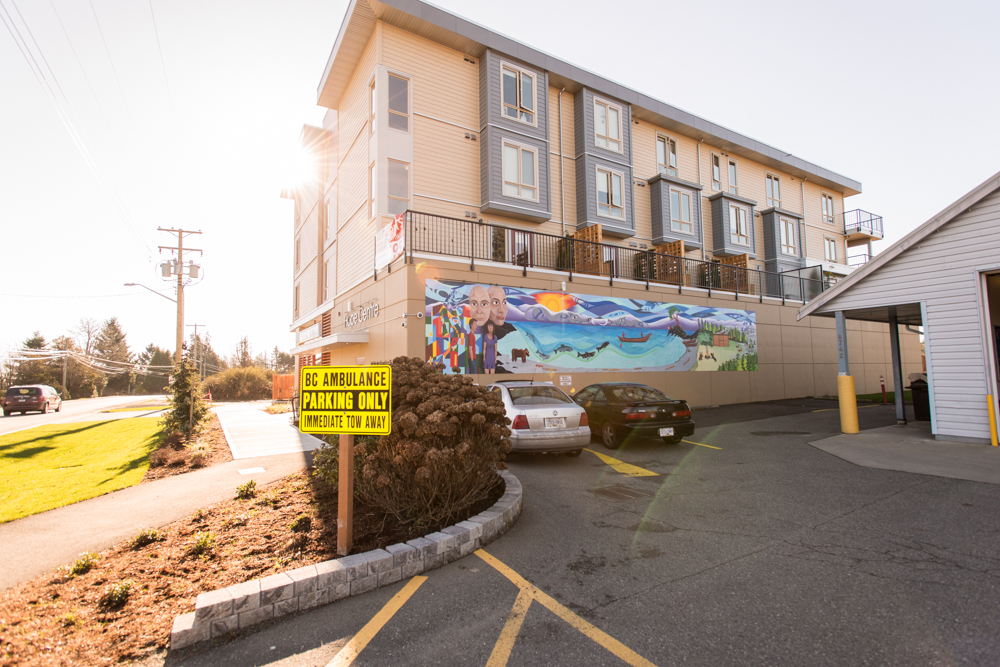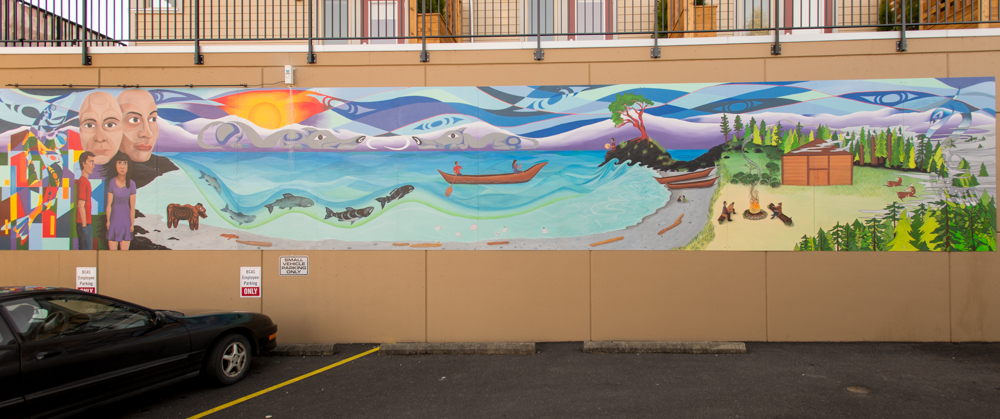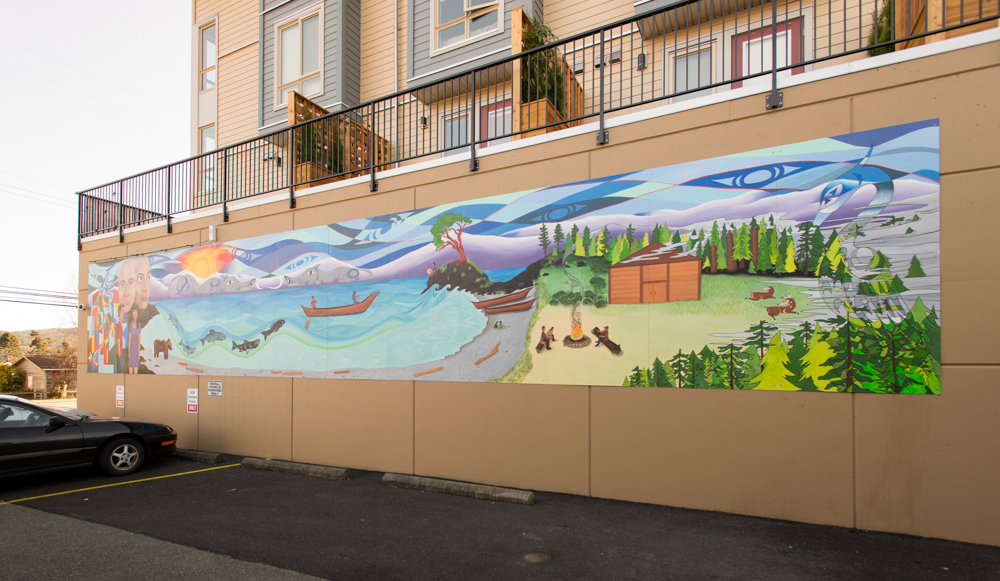For the past six years I have had the profound pleasure of managing and coordinating several large scale public art projects. This past fall I was approached by the M’akola Group of Societies to manage the creation of a mural for one of their youth housing projects in Sooke (http://www.makola.bc.ca/hopecentre/).
I was able to hire a team of four exceptionally talented young artists who researched and explored ways to honor the T’Sou-ke, Beecher Bay and Pacheedaht Nations. They came up with a very inspiring concept (story below) and designed one of the most beautiful art pieces I’ve witnessed come into being. Below are several photos from the early development through to its installation on the Hope Centre (keep an eye out the next time you are driving through Sooke).
Designed by:
Natassia Davies, T’Sou-ke Nation
Dahlila Charlie, Beecher Bay First Nation
Nicole Neidhardt, Navajo Nation
Jesse Campbell, Metis

The Story of the Hope Center Mural
Concept
The theme of our mural is Coming Home: a process of reconnecting with one’s Coast Salish traditions, culture, stories, and family, combined with a deep sense of place connected to the land. In turbulent times, a sense of place is an essential part of cultivating hope and meaningful purpose.
The flow of the mural design from left to right provides the “coming home” narrative through illustrating a shift from some of the disjointed elements of contemporary society to a journey home to culture and heritage.
This is a process of reconnection, reclaiming, and immersion in culture.
Design Elements
We chose the stickleback and heron to frame the entirety of the design because they represent the T’Sou-ke nation.
On the left, abstract, geometric colourful designs represent our modern society that is often filled with over-stimulating imagery and colour which often fails to appreciate the flow of the natural world. The angular shapes are symbolic of buildings in cities or towns. The floating masks above the faces symbolize the inner Coast Salish spirit that accompanies the youth on this journey home. The sunrise symbolizes hope, light and revitalization.
Each design element carries its own significant meaning. The salmon begin as natural looking salmon and as they swim into the bay they transform into traditional Coast Salish salmon designs. This illustrates the salmon’s connection to the Coast Salish people and the importance of salmon as a major form of sustenance and purpose in everyday life. Salmon is particularly significant to Beecher Bay.
Natural geographic features common to T’Sou-ke territory inspire the landscape design. The wolves symbolize the spirituality and traditions of T’Sou-ke, Beecher Bay, and Pacheedaht—the wolf people. The bear is the guide and protector of the youth on their journey home. The clams and various types of vegetation—huckleberry, salal, thimbleberries, blackberries, and fiddleheads—all refer to the practice and way of life of harvesting from the land and sea for sustenance.
The drummer on the basalt outcropping is singing the canoers in to shore, guiding and welcoming them home. On the right side there are people telling stories around the fire, sharing knowledge and teachings. The children playing on the beach symbolize innocence, laughter, and happiness.
We depict the Big House as the home of ceremony, spirituality, community, and cultural traditions that are sacred to Coast Salish people. The tall figures amongst the trees, dressed in cedar, are symbolic of the ancestors and spirits that help guide and watch over people in everyday life.
The trees are blended because they are a part of all that is around us. The emphasis on flow and balance throughout our composition reiterates Coast Salish harmony with the land and people and the interconnections that reverberate throughout our natural world.
